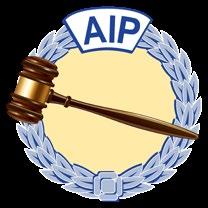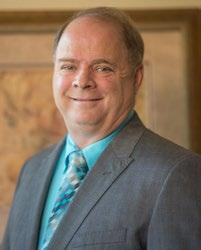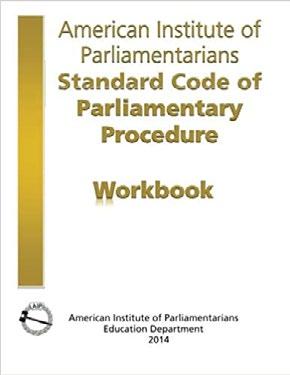




By Al Gage CPP, PRP, PAP

After holding the most successful, at least in terms of registration and attendance, Annual Session that any current members can recall, I have a few insights on the actual parliamentary law of a virtual business meeting. We had over 162 Registrants and an average participation at the Annual Session of 122 participants.
Because we used Zoom, those will be the focus of this article. Further, the Zoom Meeting features most closely approximate the features of an in-person meeting.
Platform:
First, let’s look at the process of recognition in an electronic meeting. Some members had suggested that we consider Zoom Webinar, and the Tech Team and I rejected that suggestion in favor of using Zoom Meeting. The primary limitation of Zoom Webinar is that the participants do not have control of their own microphone and the ability to mute and unmute themselves. Some meeting administrators see that inability for the participants to interact as a feature of the Zoom Webinar platform. I STRONGLY disagree with this position. While it allows you to maintain total control over the meeting, it violates the fundamental right of a person to make an interrupting motion. All of the interrupting motions are at least to some degree time sensitive. The one major complaint in meetings that I have served was that “I raised my hand and was never called on to take my Point of Order or Appeal.”
The way we performed this function at the Annual Session using Zoom Meetings was that you had to raise your hand for a Point of Order or an Appeal and all other motions or seeking of recognition had to be done through the chat to the “Tech Team”. By limiting the raise hand feature to just those two motions as opposed to the other interrupting motions such as a Factual Inquiry or Parliamentary Inquiry, we knew as the operators that we had to immediately address those with a Zoom hand raised. And, should the “Tech Team” (all credentialed parliamentarians) fail to respond to the hand raised feature, the member could still unmute themselves and make the Point of Order or Appeal AND if failed to be recognized for any of the other interrupting motions, could address that with the same two motions simply by unmuting their microphones and raising the issue. Admittedly, allowing open mikes can lead to the occasional expletive (which was not the tech team) or pets barking, mewing or making goat noises (even though it was a cat) in the background but this is easily solved by the operator muting them. Again, the inability of an individual to make at least a point of order or an appeal without the assistance of someone else unmuting them, is a fundamental flaw in the set-up of the webinar-type meetings.
Continued on following page
Next let’s move to the chat feature. I am a firm believer that the “chat to everyone” feature must be disabled in any business meeting of more than about 20 members. There are a couple of reasons for this. In a large meeting, like our Annual Session, we were using the chat to the moderators as a method of recognition for every other motion or to request to speak. A wide-open chat could overwhelm the moderators and greatly increases the chances of overlooking or skipping a member seeking regular recognition. Admittedly this is a management concern and has no parliamentary basis.
The second reason for this setting does have a parliamentary basis. A wide-open chat box in a contentious meeting allows members to debate without being recognized for as many times as they like (a violation depending on the authority), distracts the membership from what is beings said (a violation of both authorities) and makes it virtually impossible to police decorum in debate. While members complain about the lack of “chat to everyone” (or its companion, “chat to a specific person”), this setting is essential for most meetings to function appropriately.
You may have noticed that we left the chat boxes wide-open in the continuing education session and in many cases, it devolved into a side debate and argument. In an in-person meeting, of course people can and do engage in text messaging but that is only going to their circle of contacts or friends.
The last major obstacle in an electronic meeting are requirements for ballot votes. There are numerous software applications out there that are available for this purpose. The key provision in a ballot vote is the secrecy of how the voter voted. In our case, we used Election Runner and this is not an endorsement of that product. Their website provides that their ballots are secret to both the person operating the election and the tech people at their site so that should satisfy most of those requirements. AIPSC says the following:
“(The use of a voting machine, or any other method in which the person expressing a choice cannot be identified with the choice expressed, is considered a form of voting by ballot.)
AIPSC p. 151.
In researching and preparing for a ballot vote, it is important to make sure the software will perform the functions that you want it to perform. The most important aspect is that the software provides a receipt to the voter. It is also important to make sure that the operator affords the same options to the vote that would otherwise be afforded on a paper ballot. This includes allowing the member to abstain (as a choice on the ballot i.e. blank) and also the ability to write-in a candidate
(also as a choice on the ballot), limits an overvote, and will only allow one vote per member regardless of the number of devices the member uses to log in.
It becomes much more complicated when you ask the voting software to perform a ballot that requires multiple choices for multiple candidates as in an election for 4 director positions at one time. Most of the software has one flaw that has to be addressed. It is easy to set up with a maximum and a minimum number of votes cast on a particular race but remember to allow for an equal number of write-in candidates. The flaw is that you cannot simply mark a blank or an abstention as one of your choices because if they mark a blank plus 3 other choices that will alter the number of ballots cast if your methodology is simply to subtract the blanks from the ballots cast. I recommend, as we did in the annual session, to abstain, simply do not enter any ballot at all.
By far the biggest complaint about electronic meetings is the lack of social interaction that would normally occur at most meetings. I would recommend having an activity that is purely social interaction in a convention or annual meeting setting so the members can meet and interact with each other as well as leadership. All this being said, I personally do not see a way to hold an effective hybrid business meeting at a future Annual Session.
We accomplished a great deal of business at the Annual Session. We elected officers and board members, named a new authorship team for a 2nd Edition of AIPSC, adopted a new Code of Professional Responsibility (which was recently approved by NAP) and generally accomplished all of our goals of demonstrating an electronic meeting with large and enhanced membership participation and generally had a great time. Thanks again to Nilda Rivera, Esq., PRP for planning such an excellent Annual Session and the onsite “Tech Team” consisting of Helen McFadden, JD, PRP, Glen Hall, DDS, CP-T, C.J Cavin, JD, CP, PRP and Kay Crews, CPP, PRP for their technical assistance. Special thanks again to Captain Eric Ferguson, President of the Allied Pilots Association and the Allied Pilots Association for arranging for and allowing us the use of their tech facility.

There will be a Teachers’ Course this fall. The first session will be held in the evening of October 5 and will continue for a total of five plenary sessions and several student work group (cohort) sessions. Each plenary session will be held on a Monday evening and is planned for two hours, although one or two may last a bit longer. The class size is limited to 10 students and will be divided into cohorts of between two and four students.
We had a pretty good experience recently using Zoom for our Annual Session. As a result, Zoom continues to be the leading contender for our training platform. We will be evaluating Zoom along with Microsoft (Teams) and Google (Meet) to see which one makes the most sense for us. Part of our rationale is to expose our members to the available tools as we all believe online meetings will continue to be an increasing part of our parliamentarian landscape.
*Please note: enrollment is currently FULL for the Course; however, we are accepting waitlist registrants.*
If you are interested in participating, please join the waitlist using the link below.
We are still interested in identifying those educational professionals currently active in AIP as well as those with a commitment to excellence in education. Please send me a note at education@aipparl.org with your ideas and thoughts on how we can best fulfill our educational obligations to AIP and the public.
Stay tuned,
Joe Theobald, PhD, CP-T, PRP Education Director, AIP

As usual, the 2020 AIP Annual Session included elections for Officers and Directors. President Al Gage, CPP, PRP, PAP and Treasurer C. J. Cavin, JD, CP, PRP were re-elected, Secretary Bob Peskin, DDS moved up to the vice-president position and Atul Kapur, MD, CPP, PRP was elected as the new secretary.
Four new directors were elected, as well. Cameron Decker, Daniel Foster, PhD, PRP, and Ramona Hill, D. Arts, NSA, PRP are first-time Directors while Weldon Merritt, CPP, PRP returns to the Board. They join Valoree Althoff, RDH, MHA, CP, PRP, Adam Hathaway, MPA, PRP, Helen McFadden, JD, PRP, and Nilda Rivera, JD, PRP who are entering the second year of their term.
At the Board meeting following the close of Annual Session, Nilda Rivera and Helen McFadden were elected to the Executive Committee and Larry Cisar, PhD, CPP-T was re-elected as the Communications Director. Accrediting Director Kay Crews, CPP, PRP and Education Director Joe Theobald, PhD, CP-T, PRP continue in their terms, and AIP Parliamentarian Glen Hall, DDS, CP-T was re-appointed for another year. AIP appreciates all candidates for running for elected positions. If you are interested in volunteering your time and talents to AIP, please contact the AIP President. AIP is only as successful as we make it, so we invite you to volunteer.
Additional information regarding dates and registration will be available on the AIP website at aipparl.org as they become available.
Online Teacher Certification Course
October 5
Electronic Meeting
Enrollment is full for the Course; use the link to Join the Waitlist
Deadline Dates for the “Communicator”
November 15, 2020 Winter 2020 Issue
February 15, 2021 Spring 2021 Issue
May 15, 2021 Summer 2021 Issue August 15, 2021 Fall 2021 Issue
EXECUTIVE COMMITTEE
President
Al Gage, CPP, PRP, PAP president@aipparl.org
Vice President
Robert M. Peskin, DDS vpresident@aipparl.org
Secretary
Atul Kapur, MD, CPP, PRP secretary@aipparl.org
Treasurer
C.J. Cavin, Esq., CP, PRP treasurer@aipparl.org
Directors
Valoree Althoff, MHA, BSDH, CP, PRP Director01@aipparl.org
Nilda Rivera, Esq., PRP Director02@aipparl.org
Helen McFadden, JD, PRP Director03@aipparl.org
Adam Hathaway, MPA, PRP Director05@aipparl.org
Daniel Foster, PhD, PRP Director11@aipparl.org
Cameron Decker Director13@aipparl.org
Weldon Merritt, JD, CPP, PRP Director14@aipparl.org
Ramona Hill, PRP Director15@aipparl.org
Accrediting Director
Kay Allison Crews, CPP, PRP accrediting@aipparl.org
Communications Director
Larry Cisar, PhD, CPP-T communications@aipparl.org
Education Director
Joe Theobald, PhD, CP-T, PRP education@aipparl.org
Parliamentarian
Glen D. Hall, DDS, CP parliamentarian@aipparl.org
COMMITTEE CHAIRMEN
Audit
Barbara Rosi, PRP audit@aipparl.org
Budget and Finance
C.J. Cavin, Esq., CP, PRP finance@aipparl.org
Bylaws and Standing Orders
Lucy Hicks Anderson, CP, JD, PRP bylaws@aipparl.org
Ethics
Sarah E. Merkle, JD, CPP-T, PRP ethics@aipparl.org
Member Services
Brandon Walters, PRP member@aipparl.org
Opinions
Michael Malamut, CPP-T, PRP opinions@aipparl.org
Youth Activities and Scholarship Committee
Daniel Foster, PhD, PRP (Chair) youth@aipparl.org
Cameron Decker (Vice Chair)
OTHER COMMITTEES & OFFICIALS
Annual Session Coordinator
CJ Cavin, Esq., CP, PRP annualsession@aipparl.org
East Coast Practicum
Mary L. Remson, CPP-T, PRP EastCoast@aipparl.org (General Coordinator)
Valoree Althoff, MHA, BSDH, CP, PRP EastCoast2@aipparl.org (ECP Curriculum Director)
West Coast Practicum
Dollie McPartlin, CP-T, PRP WestCoast@aipparl.org (General Coordinator)
Mary L. Remson, CPP-T, PRP WestCoast2@aipparl.org (Curriculum Director)
Communicator Editor
Valoree Althoff, MHA, BSDH, CP, PRP Communicator@aipparl.org
Parliamentary Journal Editor Roger Hanshaw, JD, PhD, CPP, PRP pjeditor@aipparl.org
On June 1, 2020, AIP President Al Gage and Selection Committee Chairman Glen Hall put out a “Call for Authors,” noting that AIP was “seeking to build an authorship team in order to publish a second edition of The American Institute of Parliamentarians Standard Code of Parliamentary Procedure (AIPSC), its signature publication and parliamentary authority.” The following skills were being sought:
• Technical writing
• Research ability
• Creative/ innovative thinking
• Copy editing
• Voicing a manuscript
• Parliamentary knowledge
• Practice experience
• Project management
• Public perspective/end-user
Thirty-seven individuals submitted a response to this call – and of those, ten were nominated for the Authorship Team by the Selection Committee. Those nominees were considered at the Pre-Annual Session Board of Directors meeting on July 29 and were confirmed. Those nominated by the Selection Committee and appointed by the Board include:
• Kay Allison Crews, CPP, PRP, Project Coordinator
• Lucy Hicks Anderson, Esq., CP, PRP
• C.J. Cavin, Esq., CP, PRP
• Al Gage, CPP, PRP, PAP
• Barry Glazer, MD, CPP-T
• Glen Hall, DDS, CP-T, PRP
• Atul Kapur, MD, CPP, PRP
• Michael Malamut, JD, CPP-T, PRP
• Eli Mina, CPP-T, PRP
• Shannon Sun, CPP-T, PRP
This is a varied group – covering different professions, types of parliamentary practice, geographic areas, ages, prior authorship experience, and credentials. As Project Coordinator, I am eager for us to begin our work – but that work will not be just the purview of the ten on the Authorship Team. We have reached out to those with particular knowledge for their help, including those who made drafting the current version of the AIP Standard Code of Parliamentary Procedure a successful project.
Work is underway to establish a webpage which will solicit feedback from those who use AIPSC, and from those who don’t. Once that page is established, look for your opportunity to provide feedback on this important project. Other opportunities for feedback are also being considered.
The Team is busy “studying” right now – obtaining and reviewing previous copies of The Standard Code, reviewing articles from back-issues of the Parliamentary Journal, and re-reading the current edition of AIPSC. We’ll work to provide updates on our progress in future issues of the Communicator!
“With a vote of over 90% in favor, the American Institute of Parliamentarians has adopted the Joint Code of Professional Responsibility for Parliamentarians, with the proviso that the Revised Code not be in effect until adopted by the National Association of Parliamentarians, and that changes to the name of the document in the AIP Bylaws and Standing Orders be made as a technical and conforming change at that time.” And with those words, most of AIP’s involvement in the adoption of a new Joint Code of Professional Responsibility was completed.
As was discussed in the last issue of the Communicator, a special committee of NAP and AIP had been working on a revised Joint Code of Ethics. NAP’s Board, which has the authority to approve changes on behalf of NAP, had offered one suggestion. AIP’s Board had suggested an additional change – to the title of the document, noting that this was much more a Code of Professional Responsibility rather than one of ethics. The Joint Committee concurred, and the change to the name of the document was adopted without objection by AIP. The Joint Code was adopted overwhelmingly at AIP, following vigorous discussion.
NAP President Darlene Allen is an AIP member; she was at the AIP Annual Session and paid careful attention to the debate. Many other members of the NAP Board also are dual-members and attended the AIP Annual Session, so they, too, heard the AIP debate on the revision. The document then went to the NAP Board for final adoption. At their meeting the night before the National Training Conference, the NAP Board took up the Code of Professional Responsibility, and adopted it without objection. With that step completed, the Code is now adopted by both organizations, and went into effect immediately.
On the final day of the National Training Conference the NAP Professional Standards Committee presented a workshop on the new Code, and answered questions from those attending.
The Code has been placed on the AIP website under Governing Documents and is also linked below. The Joint Committee believes that the new Code is more reflective of the many differing roles that parliamentarians are asked to play, and as such, is a significant step forward in the practice of parliamentary procedure as a profession.
Kay
Allison Crews,
CPP, PRP Chair,
AIP/NAP Joint Code of Ethics Review Committee
Activities of the department have focused on further improving the content, methodology, and outcomes of AIP’s certifying examinations. The department has three divisions: CP examiners, the chair responsibilities are shared by E. Marie Wilson, CPP-T, and Kay Crews, CPP; CPP examiners, chaired by Colette Collier Trohan, CPP-T; and Recertification, chaired by Craig Henry, CPP-T. Marie Wilson serves as Assistant Director of the Department.
The Application, Examination, and Certification Packages for attaining CP and CPP credentials, and the Application for Recertification package to retain credentials, have been updated. Each of these files contains all the information a candidate needs in one place, from application through certification in a fillable PDF.
The CP division continues to restore and revive the question banks for the written examinations.
The Department congratulates Mark Desrosiers, CP; Lucy Hicks Anderson, CP; CJ Cavin, CP; and Jason Robinson, CP, who have earned their Certified Parliamentarian credential since the last Annual Session. One student successfully completed the exam, and is pending submission of her points.
Glen Hall, CP-T, and Teresa Stone, CP-T, have each submitted their hours and been awarded the -T credential, and finally, Atul Kapur, CPP, successfully completed the CPP oral exam at the West Coast Practicum.
WHEREAS, Parliamentary procedure in the United States was first written in the Manual developed by Thomas Jefferson for his own use in presiding over the Senate of the United States;
WHEREAS, Henry M. Robert used that manual and its progeny as developed in the House of Representatives of the United States to write what is considered by many to be the first “prescriptive” manual of parliamentary procedure, Pocket Manual of Rules of Order for Deliberative Assemblies in 1876;
WHEREAS, That manual first produced by Robert and now revised and modernized by the Robert’s Rules Association has become an American standard for parliamentary procedure, with the most recent edition being published in 2020;
WHEREAS, Henry M. Robert had an illustrious career in the United States Army from graduation with honors at the U.S. Military Academy in 1857 to retirement in 1901 as a brigadier general in the Corps of Engineers;
WHEREAS, Henry M. Robert engaged in engineering and combat operations while serving in the United States Army, for example the “Pig War” on San Juan Island in 1859;
WHEREAS, In 1867, Henry M. Robert was assigned as the chief engineer of the military division of the Pacific and worked from San Francisco where he supervised the construction of the lighthouse and harbor;
WHEREAS, In 1873, Henry M. Robert was assigned to Milwaukee, Wisconsin, where he supervised the construction of lighthouses on the Lake Michigan and the harbor at Milwaukee;
WHEREAS, Under President Grover Cleveland, Henry M. Robert was appointed to a board of engineers to develop a deep water port on the Gulf of Mexico and helped to select Galveston, Texas, for this port then was the engineer on the project for the Corps of Engineers which project was completed in 1895;
WHEREAS, President William McKinley recognized his achievements and appointed Henry M. Robert as brigadier general and commander of the Corps of Engineers prior to his retirement from the United States Army after 44 years of service in 1901;
WHEREAS, After retirement from the United States Army, Henry M. Robert continued to practice engineering and designed the seawall for storm protection at the Port of Galveston;
WHEREAS, After retirement, Henry M. Robert continued to actively write and improve his prescriptions for parliamentary procedure producing in 1915, Robert's Rules of Order, Revised, in 1921 Parliamentary Practice: An Introduction to Parliamentary Law and in 1923 Parliamentary Law.
WHEREAS, Since the death of Henry M. Robert in 1923 his family has organized the Robert’s Rules Association to revise and retain the values of the rules system he developed from his experiences in meetings and which in 2020 will be published as Robert’s Rules of Order Newly Revised, Twelfth Edition;
WHEREAS, The United States Congress has before it on this date several bills which seek to rename certain military installations within the United States;
WHEREAS, At the time this is written some of these bills are within the annual appropriation bill for the Department of Defense and some of these are in other legislative vehicles; and
WHEREAS, General Henry M. Robert is a person whose military career was distinguished and whose contribution to our civil society and civil discourse through his teaching, his civic activities, and his writings on parliamentary procedure cannot be paralleled by any other American civilian or military commander;
BE IT RESOLVED That the American Institute of Parliamentarians does endorse and recommend this resolution to its members as a basis for any member who is so interested to write to the member’s Senators and Congress members regarding the naming of military installations within the United States and that the American Institute of Parliamentarians does endorse and recommend to Congress and the Department of Defense that General Henry M. Robert be considered as a figure appropriately to be honored with the naming of a military base; and
BE IT FURTHER RESOLVED That a copy of this resolution shall be forwarded to the Secretary of Defense, the National Association of Parliamentarians and the Robert’s Rules Association for any action these may deem appropriate.
Check out this article clip - The Elusive Henry Martyn Robert: A Historical Problem
Rose Acerra Oakhurst, New Jersey
Sonya Ash Haynesville, Louisiana
Kimberley Baker Arlington, Virginia
William D Bell Abilene, Texas
David Bennett PRP Nepean, Ontario Canada
Kianna Bolante Fife, Washington
Steven Bolen Plano, Texas
Derrick Brown
Van Lian Thang Cinzah Copenhagen, Denmark
R. Tamara de Silva Chicago, Illinois
Cameron Decker Goodyear, Arizona
Tamara Deloatch-Warren Woodstock, Georgia
Howard Egerman Oakland, California
Kendra Flood
Donna V. Gainey Manassas, Virginia
Theljewa Garrett, PRP Ambler, Pennsylvania
Ray Harwood Avondale, Arizona
Will Haxton Plant City, Florida
Hannah Hefner
Maggie Hefner
Gail Knapp, PhD, JD, PRP Las Vegas, Nevada
Joseph Laborie Bloomdale, Ohio
William Lavezzi Bedford, Ohio
Erika Lindemann Chapel Hill, North Carolina
Laura Meade Cedar Rapids, Iowa
Caroline Derrow Auburn, Indiana
Rachel Miller-Bleich Arlington, Virginia
Joe Orzal Stockton, California
Sabra Pacheco Bronx, New York
Hugh Phillis Nashua, New Hampshire
Joseph Platt Fort Wayne, Indiana
Joe Ramstad
Corey Shirey Woodward, Oklahoma
Tracy Simons Bedford, Ohio
J. Timothy Sulisz Toronto, Ontario Canada
Nicholas Tharney Monroe Township, New Jersey
Deana Tollerton Austin, Texas
Deborah Underwood Chicago, Illinois
Karen Williams White Plains, New York

AIP has two separate ways we earn money from Amazon: through the AmazonSmile program and through items in the AIP bookstore at our website.
Items purchased through the bookstore pay us a higher rebate, but only if the item is actually listed in the bookstore. For that reason, some “gavel” items (jewelry, clothes, and um, gavels) are going into the AIP bookstore.
Put higher priced purchases and gifts into the AIP bookstore and purchase them through the bookstore for a higher donation to AIP. Anyone who would like to coordinate that type of activity need only contact President Al Gage for help!
This is “free money” for AIP, and anyone who supports these programs is also supporting our professional organization!!!
Study tip for CP/CPP: have you worked through the AIPSC Workbook yet? It has over 200 pages to highlight important content of AIPSC.
It is available for $33.71 through Amazon Smile.
PURCHASE HERE
Please note you must sign into Smile.Amazon.com first.
